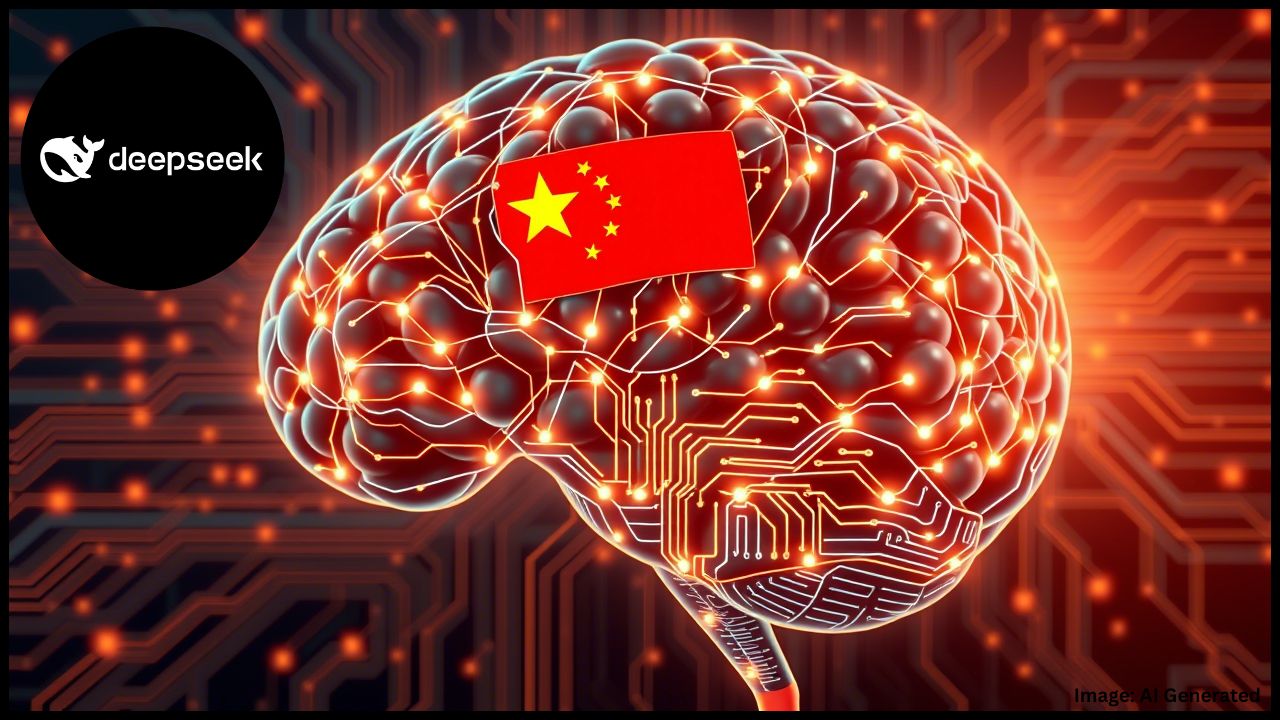China’s DeepSeek AI model has received a significant upgrade, positioning the country as a serious player in the global race to develop cutting-edge artificial intelligence. The new model, R1-0528, shows remarkable improvements in logic, mathematics, programming, and problem-solving capabilities—all while reducing hallucinations, or factual errors, in generated content. This latest enhancement signals China’s growing ambition to rival global tech giants like OpenAI, Google, and Anthropic in the realm of safe, intelligent, and reliable AI systems.
DeepSeek’s R1-0528 is designed to not only match but possibly exceed performance metrics of several prominent AI models in specific domains. Its development aligns with China’s broader national strategy to lead in artificial intelligence innovation across industrial, consumer, and scientific fields. This includes government-supported initiatives for tech development, digital infrastructure, and AI research partnerships.
Quick Summary
- DeepSeek R1-0528 is a major upgrade with enhanced reasoning, math, and coding skills.
- Outperforms xAI’s Grok 3 Mini and Alibaba’s Qwen 3 in LiveCodeBench benchmarks.
- Nearly matches OpenAI’s o4-mini and o3 models in code generation quality.
- Uses efficient “Mixture-of-Experts” training architecture to reduce computational load.
- Already embedded in real-world applications, such as Geely Auto’s smart vehicles.
- Supported by government policy favoring domestic AI development.
- Refer to the official update from Reuters.
What Is DeepSeek and Why It Matters
DeepSeek is a homegrown Chinese AI model, developed by a team of researchers from Tsinghua University and a consortium of AI-focused tech firms. Its aim is to meet the rising global demand for AI systems that can handle complex reasoning tasks with minimal error. The model first gained attention for its ability to solve problems in mathematics and programming with precision, often outperforming established AI systems in logic-heavy evaluations.
With the release of DeepSeek R1-0528, the model enters a new era. It’s now being considered as a serious alternative to OpenAI’s GPT-4, Google’s Gemini 1.5, and Meta’s LLaMA 3 models—not only in technical performance but in deployment flexibility and cost-efficiency.
How Does DeepSeek R1-0528 Compare Technically?
According to recent LiveCodeBench results, DeepSeek R1-0528 nearly catches up to OpenAI’s o4-mini in tasks requiring high-level code generation and logical reasoning. It scored higher than:
- Grok 3 Mini from xAI
- Qwen 3 from Alibaba
These benchmarks are published and peer-reviewed, offering transparent and replicable evaluations. They assess how models perform on real-world programming challenges and mathematical tasks. Performance in these benchmarks reflects how well a model can support industries like software engineering, fintech, scientific computing, and academia.
Mixture-of-Experts Training
One standout innovation in DeepSeek is its use of a “Mixture-of-Experts” (MoE) architecture. This design allows the model to activate only specific sub-networks for different tasks, reducing unnecessary computational load. The key benefits include:
- Lower training and inference costs
- Scalable performance for large deployments
- Energy efficiency suitable for edge and mobile applications
This architecture is already being adopted in some Western models like Google’s Gemini 1.5, further validating its effectiveness. However, DeepSeek’s implementation is notably leaner, giving it an edge in energy-constrained environments.
Real-World Use Cases
Perhaps the most exciting aspect of DeepSeek R1-0528 is how it’s already being used in the real world:
Automotive: Geely Smart Cars
Chinese automaker Geely Auto has incorporated DeepSeek into its next-generation smart vehicle lineups. The AI system enables:
- Voice-activated control systems with multi-turn conversations
- Real-time traffic and navigation optimization
- Entertainment personalization based on driver profiles and usage patterns
According to Geely’s spokesperson, the AI significantly improves user interaction quality while reducing the driver’s cognitive load.
Consumer Electronics and Education
Based on reporting from Rest of World, DeepSeek has also been integrated into consumer electronics such as:
- Smart refrigerators and air conditioners
- Chinese-language mobile assistants
- E-learning platforms focused on STEM education
In education, DeepSeek has demonstrated high accuracy in solving high school-level math problems and has been piloted in online tutoring systems that provide step-by-step reasoning for complex questions.
Global Competition Heats Up
DeepSeek’s improvements come at a time when global AI competition is accelerating. While companies like OpenAI and Google remain dominant, Chinese models are catching up quickly, especially in specialized and regional use cases. According to a white paper by the China Academy of Information and Communications Technology (CAICT), over 200 large-scale models have been developed domestically since 2022, with DeepSeek among the top in quality and usability.
AI experts such as Mary Meeker have noted that the emergence of these models is not just symbolic—it reflects real shifts in capabilities and market dynamics. Cost-efficiency, training optimization, and government support give Chinese AI firms a meaningful edge, particularly in Asia and parts of Africa and South America where data localization and affordability are key concerns.
Expert Insights and Industry Reactions
Feedback from academic and industrial experts has been cautiously optimistic. A 2025 study by the Beijing Academy of Artificial Intelligence (BAAI) rated DeepSeek’s math problem-solving at 93% accuracy, compared to GPT-4’s 94.5%. In logical inference tasks, DeepSeek performed better on tasks involving rule-based reasoning and coding syntax.
Industry Observations:
- Robustness in technical domains: DeepSeek shines in structured reasoning and formal languages.
- Deployment versatility: The model is being ported to edge devices and integrated into multi-modal platforms.
- Localization: DeepSeek performs particularly well in Chinese dialects and cultural contexts, a feature still lacking in many Western models.
Government Support and Strategic Context
The Chinese government’s policies play a key role in DeepSeek’s momentum. In 2023, the State Council updated its Next-Generation Artificial Intelligence Development Plan, targeting leadership in AI by 2030. Key components include:
- AI research funding exceeding $15 billion over five years
- National data sharing frameworks to accelerate training efficiency
- Collaborations between universities and tech enterprises to foster innovation
This environment helps streamline model training, optimize datasets, and speed up product rollouts.
What This Means for AI’s Future
The emergence of DeepSeek highlights a shift in the AI ecosystem from being monopolized by a few Silicon Valley firms to becoming multipolar. As global demand grows for adaptable, localized, and cost-effective AI tools, models like DeepSeek are poised to fill critical gaps.
For developers and startups, it means access to:
- Competitive alternatives to expensive Western APIs
- Models optimized for specific technical and linguistic tasks
- Open frameworks that support fine-tuning and customization
For policymakers, it raises important questions about:
- AI governance
- National data strategies
- Ethical use and alignment across cultures
For consumers, it could soon mean:
- Improved digital assistants in local languages
- More intuitive AI-powered devices
- Enhanced AI educational tools in native tongues
Overall Summary
China’s DeepSeek AI model, particularly with its latest R1-0528 upgrade, is no longer just a domestic experiment—it’s a global contender. With real-world applications, competitive benchmark results, and the backing of national policy, DeepSeek is positioned to challenge the dominance of Western AI giants.
For professionals, developers, and tech enthusiasts, this development marks a pivotal moment. The AI world is becoming more diverse, more competitive, and more accessible—and DeepSeek is helping lead that transformation.
Read More
ChatGPT Records 365 Billion Annual Searches – New Report Reveals Why
FAQs About DeepSeek R1-0528
What is the DeepSeek R1-0528 model?
DeepSeek R1-0528 is a large-scale Chinese AI model optimized for logic-intensive tasks. Developed using Mixture-of-Experts training methods, it excels in math, code generation, and structured problem solving.
How does it compare with ChatGPT?
In benchmarked coding and math tasks, DeepSeek R1-0528 has shown comparable results to ChatGPT’s GPT-4 mini models. However, it remains more localized in its general conversation skills.
Who is using DeepSeek?
Corporations like Geely, educational tech platforms, and smart home appliance manufacturers are among the first adopters. The model is also being trialed in digital government services in select provinces.
Is it available outside China?
Currently, DeepSeek is focused on the Chinese-speaking market, though enterprise-level licensing is reportedly being explored for international partners.
What makes it unique?
Its scalable, energy-efficient MoE architecture combined with regional language strengths makes it a distinct player among LLMs.

